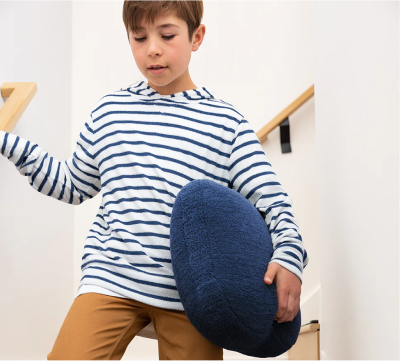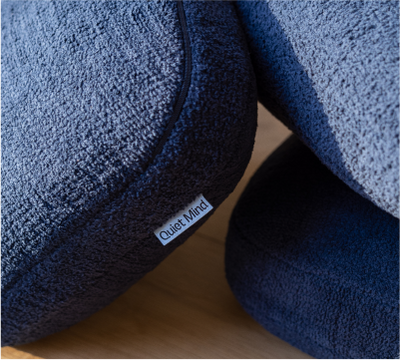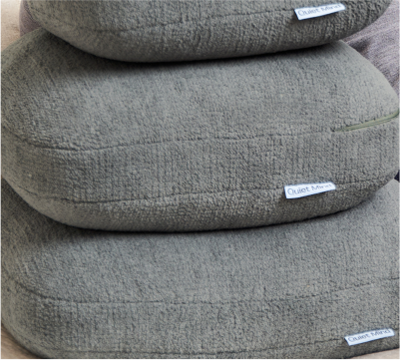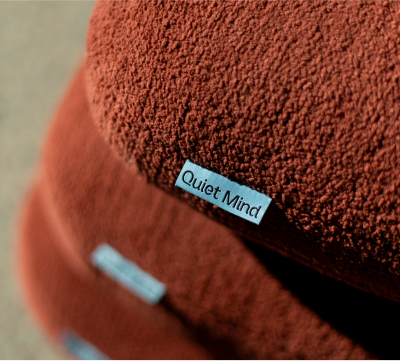Managing ADHD isn’t about fixing who you are—it’s about finding what helps you function and feel better in a world that isn’t always designed for neurodiverse minds. For adults, it might look like struggling to stay focused through endless to-do lists. For parents, it may mean trying to understand a child who feels constantly overwhelmed or misunderstood. ADHD affects each person differently, but the common thread is often exhaustion—from trying to keep up, explain, or cope in silence.
Instead of chasing a one-size-fits-all solution, this article offers a steady approach to understanding ADHD and managing it in ways that are practical, compassionate, and adaptable to real life. Whether you're navigating this for yourself or someone you care for, you're not alone—and there are tools and strategies that can help.
What Causes ADHD and How Does It Present?
Common Causes and Risk Factors of ADHD
ADHD isn’t caused by a single factor. Instead, it's the result of a combination of influences—some biological, some environmental.
Genetics often play a large role. If a parent or sibling has ADHD, there’s a higher likelihood others in the family may as well. But it’s not just about heredity.
Other contributing factors include:
- Prenatal exposure to substances like tobacco, alcohol, or lead
- Premature birth or low birth weight
- Early brain injuries or developmental disruptions
- Chronic stress in early childhood, which may impact brain development
These influences affect the structure and function of areas in the brain responsible for focus, impulse control, and executive functioning.
ADHD is not a result of bad parenting or lack of discipline—it’s a neurodevelopmental condition that affects how the brain regulates attention and behavior.
Key Symptoms in Children, Teens, and Adults
While the core traits of ADHD like, inattention, hyperactivity, and impulsivity—are well-known, the way they appear can shift depending on age.
Children often:
- Struggle to sit still or stay quiet
- Interrupt frequently
- Get easily distracted during tasks or play
- Forget or lose things often
Teenagers might:
- Miss deadlines or forget assignments
- Experience emotional reactivity or outbursts
- Feel overwhelmed by multitasking
- Show signs of anxiety or low self-esteem
Adults often face:
- Difficulty with time management or organization
- Impulsive decision-making (e.g. overspending, changing plans suddenly)
- Trouble starting or finishing tasks
- Chronic restlessness, even if it’s internal
These patterns are not about laziness or lack of effort. ADHD symptoms can create real-world difficulties, especially when misunderstood or unsupported.
Best ADHD Management Strategies for Adults
Managing Work, Relationships, and Daily Life
ADHD in adulthood doesn’t disappear—it just wears different clothes. Instead of classroom behavior, challenges show up in meetings, relationships, and routines. Managing ADHD as an adult means learning to adapt to your environment, not just yourself.
Here are practical strategies:
- Use visual tools: Calendars, sticky notes, and reminder apps keep tasks visible and actionable.
- Break tasks into small, timed steps using the Pomodoro technique or timers.
- Communicate openly in relationships: Share what helps (e.g. written reminders, gentle nudges.)
- Establish buffer time between appointments to prevent overwhelm.
Adult ADHD often goes undiagnosed, but recognizing the signs can be the first step toward creating systems that truly support your rhythm—not society’s expectations.
Adult ADHD: Common Challenges and Solutions
Some common issues adults with ADHD face include:
- Chronic lateness or forgetting plans.
- Trouble prioritizing or finishing tasks.
- Emotional overwhelm from minor stressors.
- Sensitivity to criticism or perceived failure.
Solutions to explore:
- Therapy or ADHD coaching to build self-awareness and tools.
- Noise-canceling headphones or background music to reduce distraction.
- Body doubling—working alongside someone to stay focused.
- Set “transition rituals” (e.g., making tea before shifting tasks) to reduce mental friction.
- Use a weighted blanket during rest or wind-down periods to support regulation through calming pressure.
Small shifts, when done consistently, create a strong foundation. You don’t need to “fix” yourself—just find what makes your brain feel supported.
How to Manage ADHD in Children and Teenagers
Creating Structure and Predictable Routines
Children and teens with ADHD thrive on consistency and predictability. Without it, transitions can feel jarring, and tasks can become overwhelming.
Here’s how to build ADHD-friendly structure at home:
- Set clear daily routines: Wake-up times, meals, homework, and bedtime should follow a reliable pattern.
- Use visual schedules or charts: These help younger kids know what to expect and reduce arguments.
- Offer gentle transitions: Use 5–10 minute warnings or visual timers to shift from one activity to the next.
- Create designated zones for homework, play, and downtime to reduce sensory overload.
Predictability gives kids with ADHD a sense of stability and confidence. When they know what’s coming, they’re better able to regulate emotions and behavior.
School Support, Homework, and Behavioral Tools
Academic environments can be especially challenging for children with ADHD. They’re expected to sit still, follow complex instructions, and stay focused in often overstimulating settings.
Ways to support learning and behavior:
- Break homework into smaller tasks with short breaks in between.
- Use reward systems that focus on effort, not just outcomes (e.g., stickers, points, or praise for trying.)
- Request accommodations through an IEP or 504 Plan (if in the U.S.)—such as extra time, movement breaks, or seating near the front.
- Collaborate with teachers to use consistent strategies at home and school.
Children with ADHD aren’t being defiant—they’re navigating a system that doesn’t match how their brains work. Compassion and teamwork make a huge difference.
ADHD Medication Options: Stimulants and Non-Stimulants
How Stimulants Work and When They’re Prescribed
Stimulants are the most common type of medication prescribed for ADHD. Despite the name, they don’t make someone more hyperactive—they help regulate brain chemicals like dopamine and norepinephrine, improving attention and focus.
Common stimulant options:
- Methylphenidate (e.g., Ritalin, Concerta)
- Amphetamines (e.g., Adderall, Vyvanse)
They're often prescribed when:
- ADHD symptoms significantly disrupt school, work, or relationships
- Behavioral strategies alone aren’t effective
- There’s a clear pattern of executive dysfunction (time blindness, impulsivity, etc.)
Medication isn’t a cure—but for many, it’s like turning the volume down on distractions and helping their brain pause before acting.
Alternatives to Stimulants: Atomoxetine and Antidepressants
Not everyone responds well to stimulants. Some experience side effects, while others may have coexisting conditions that make them less ideal.
Alternative options include:
- Atomoxetine (Strattera): A non-stimulant that works on norepinephrine and may take several weeks to show effects.
- Certain antidepressants (e.g., bupropion): Sometimes prescribed if ADHD is combined with anxiety or depression.
- Guanfacine or clonidine: Often used in children, especially if hyperactivity or sleep issues are prominent.
These options may be slower-acting, but are helpful for those who need a gentler or more tailored approach.
Risks, Side Effects, and Medical Supervision
Every ADHD medication comes with potential side effects. Common ones include:
- Appetite suppression
- Difficulty sleeping
- Irritability or mood swings
- Headaches or increased heart rate
Because of this, close monitoring by a healthcare provider is essential. Adjusting the dose, timing, or type of medication can make a significant difference in how well it’s tolerated.
ADHD treatment is not one-size-fits-all. What works for one person may need to be adjusted—or avoided—for another.
Non-Medication Approaches to ADHD Management
Cognitive Behavioral Therapy (CBT) and ADHD Coaching
CBT helps individuals recognize unhelpful thought patterns and replace them with more adaptive ones. For ADHD, it’s especially useful for:
- Reducing negative self-talk (“I’m lazy” or “I always mess up”)
- Learning practical coping strategies
- Managing emotional dysregulation
ADHD coaching, on the other hand, is focused more on daily function:
- Setting goals
- Structuring time
- Breaking tasks into smaller, achievable steps
Therapy supports emotional understanding, while coaching builds actionable momentum. Both can be powerful tools, especially together.
Skills Training: Time Management, Organization, and Emotional Regulation
People with ADHD often need explicit teaching in skills others develop naturally. These include:
- Time perception tools: Visual timers, alarms, and checklists.
- Organization systems: Color-coded folders, digital reminders, “drop zones” at home.
- Emotion regulation: Name-the-feeling practices, breathing exercises, journaling, weighted blankets .
ADHD isn’t just about attention—it affects how we manage time, emotions, and motivation. Training these skills is a form of self-compassion.
Supportive Therapy and Building Self-Esteem
Many people with ADHD carry years of shame or feeling “not good enough.” Therapy can help reframe these beliefs and reinforce identity beyond the diagnosis.
Helpful forms of therapy:
- Narrative therapy: Rewriting personal stories from a place of strength.
- Support groups: Knowing you’re not alone can be life-changing.
- Psychoeducation: Understanding your own brain can reduce guilt and increase acceptance.
Healing begins when we replace “What’s wrong with me?” with “What kind of support does my brain need?”
Lifestyle Changes to Help Manage ADHD Naturally
Exercise, Diet, and Sleep for Better Focus and Energy
Small shifts in daily habits can make a real difference for people with ADHD. While these changes don’t replace treatment, they support brain function and emotional balance.
Exercise:
- Regular physical activity boosts dopamine and norepinephrine, improving attention and mood.
- Even a short walk or dance break can help reset the nervous system.
- Activities like yoga, swimming, or martial arts offer both structure and movement.
Diet:
- Balanced meals with protein, complex carbs, and omega-3 fatty acids may support focus and energy.
- Watch for sensitivities to food dyes or added sugars, which some individuals find overstimulating.
- Stay hydrated—dehydration can mimic inattention and fatigue.
Sleep:
- ADHD often disrupts sleep rhythms. Consistent bedtimes, winding down rituals, and avoiding screens before bed can help.
- Some find weighted blankets or calming sounds useful for relaxation.
Think of lifestyle changes as scaffolding—offering gentle, daily support to your brain’s unique rhythm. Weighted blankets can further support this rhythm at night by promoting deeper, more restful sleep through calming, evenly distributed pressure.
Stress Management and Mindfulness Practices
ADHD can heighten stress sensitivity, making calm hard to access in challenging moments. Mindfulness isn’t about sitting still for long periods—it’s about learning to notice without judgment.
Tools to try:
- Deep breathing: Inhale for 4, hold for 4, exhale for 6 to calm the nervous system.
- Body scans: Noticing physical sensations to shift attention out of racing thoughts.
- Grounding practices: Using texture, scent, or sound to stay present.
Even 2–3 minutes of these practices a day can train the brain to pause, helping reduce reactivity and improve emotional regulation.
Mindfulness isn’t about quieting the mind—it’s about making room for the noise and choosing how to respond.
Creating Routines, Reducing Distractions, and Reward Systems
Building a supportive environment is just as important as internal strategies.
- Externalize tasks: Use whiteboards, checklists, or sticky notes to make actions visible.
- Limit decision fatigue: Create daily routines that remove the need for constant planning.
- Use positive reinforcement: Reward effort with small, meaningful motivators (e.g. taking a break, listening to a favorite song.)
And for distractions:
- Turn off unnecessary notifications.
- Use noise-canceling headphones or background sound.
- Break work into “focus sprints” followed by movement.
ADHD brains crave stimulation—but with the right structure and support, that energy can help calm the ADHD mind and be channeled into creative, productive momentum.
Building a Long-Term ADHD Management Plan
Setting Achievable Goals and Tracking Progress
Long-term management doesn’t mean rigid routines—it means crafting a system that’s flexible, realistic, and aligned with your energy.
Tips for goal-setting:
- Break goals into micro-steps.
- Use habit trackers, journals, or visuals to monitor progress.
- Celebrate tiny wins—they’re still forward movement.
Avoid overcommitting. A simple goal like “prep lunch the night before” can have a ripple effect across your day. Sustainable progress with ADHD is built on consistency, not perfection.
Involving Family, Educators, and Employers in the Support System
ADHD isn’t managed in isolation. Support from people around you can help reduce shame, increase structure, and improve outcomes.
Ways to involve others:
- Educate them about how ADHD shows up for you (not just the stereotype.)
- Ask for specific support (e.g. reminders, flexibility, quiet space.)
- Use collaborative tools like shared calendars or routines.
For children and teens, teacher collaboration, peer understanding, and clear communication with caregivers are essential to reduce emotional burden. You’re not “too much.” With the right team, ADHD becomes easier to navigate—and even thrive with.
Knowing When to Seek Professional Help
It’s time to reach out for support when:
- Daily life feels unmanageable, despite trying strategies.
- Emotional exhaustion, shame, or anxiety are increasing.
- You or your child are struggling at school, work, or in relationships.
Professionals who may help:
- Psychologists or psychiatrists for diagnosis and therapy.
- ADHD coaches or tutors for skill-building.
- Occupational therapists for sensory and executive function support.
Seeking help isn’t giving up—it’s recognizing your value and choosing tools that honor your needs.
About Quiet Mind
At Quiet Mind, we believe in the power of simple, natural solutions to ease the mind and body. Our signature weighted pillows are designed to provide comforting pressure, helping to alleviate stress, anxiety, and restlessness.
Whether you're seeking a moment of calm during a hectic day or a more restful night's sleep, Quiet Mind offers tools to support your journey toward tranquility. Discover the soothing embrace of our weighted pillows and find your path to a quieter mind.
FAQs: What You Should Know About Managing ADHD
Can ADHD Be Managed Without Medication?
Yes—many people use behavioral strategies, coaching, therapy, and lifestyle changes to manage ADHD. However, medication can be a helpful part of a broader support plan for some.
What’s the Best Strategy for Children with ADHD?
Structure, positive reinforcement, movement, and parental support are key. Clear expectations, predictable routines, and collaborative school environments help kids feel confident and secure.
How Can I Improve Focus Without Stimulants?
Try:
- Physical movement before focus tasks
- Body doubling (working alongside someone)
- Background noise or music to anchor attention
- Time-blocking and regular breaks
Do ADHD Coaching and CBT Actually Work?
Yes—for many people, they offer practical tools and mindset shifts. CBT addresses thoughts and emotions, while coaching focuses on daily action and planning.
Is It Possible to Outgrow ADHD?
Symptoms can change over time, and some people develop strong coping strategies that make ADHD less disruptive. But for most, ADHD remains part of their neurology into adulthood—it’s more about learning to live with it than “growing out of it.”

















